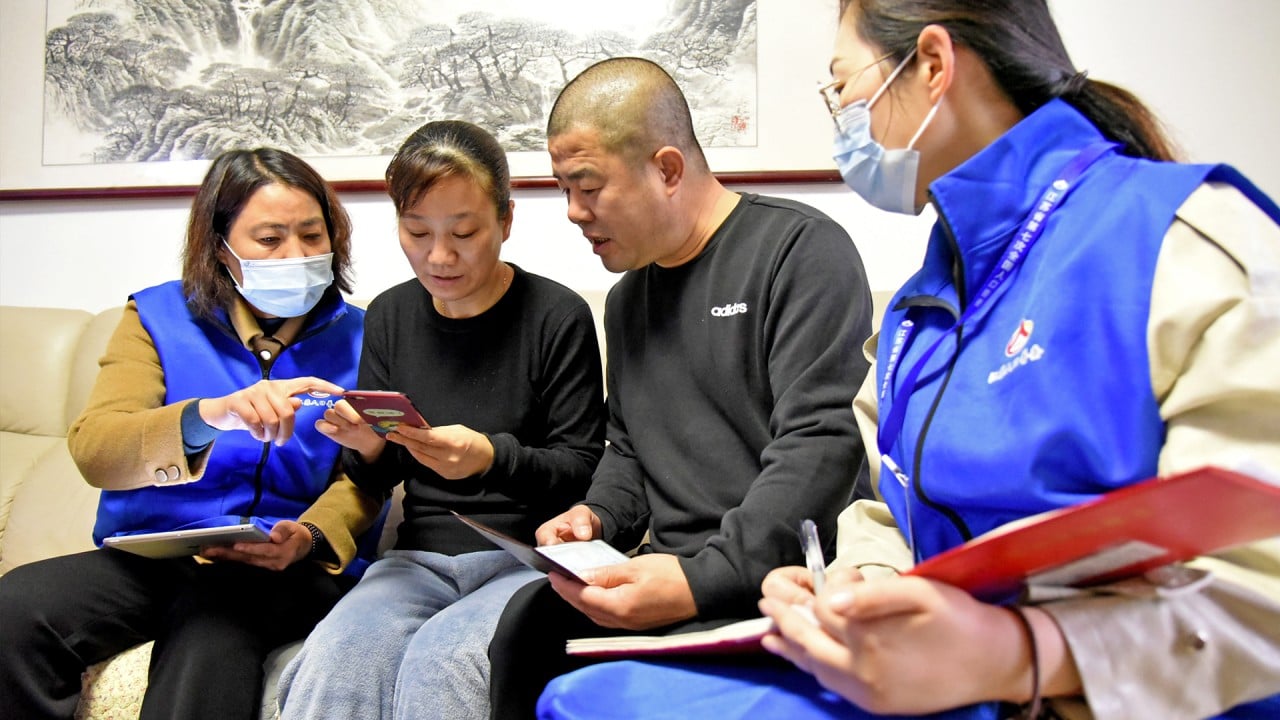
China starts once-a-decade census of world’s largest population
- The national headcount was almost 1.34 billion in 2010, and Beijing says that could grow to 1.42 billion this time around
- Millions of volunteers will help collect the data but most citizens are expected to enter their information via a smartphone app
Millions of census-takers began knocking on doors across China on Sunday for a once-a-decade headcount of the world’s largest population that for the first time will use mobile apps to help crunch the massive numbers.
Explainer | What is China’s census, and why is it important?
China conducts the census every 10 years to determine population growth, movement patterns and other trends, using the findings to apportion resources for education, health, transport, labour, elderly care and other services.

02:19
China begins once-in-a-decade census to gather details about its 1.4 billion population
Much of the attention on this year’s census, which is expected to take two years to compile, will focus on whether it indicates any population bump from China’s relaxation of its former “one-child policy”.
But the change has not yet resulted in a baby boom.
The national birth rate last year was the slowest since the founding of the People’s Republic in 1949, with many Chinese today choosing smaller families due to higher living costs.

The government forecasts the 2020 census could update the population to 1.42 billion, a 6 per cent increase. But a research institute affiliated with property giant Evergrande Group issued a study last week saying the government figure was an overestimate, and recommended that three children be allowed.
The study sparked a passionate online discussion, with many saying the real curbs on childbirth were rising costs and insufficient policy support for families.
“Even a 10-child policy is useless until we create a society that is childbirth friendly and child-rearing friendly,” said one widely “liked” comment on the WeChat platform.

Demographic experts have estimated it could take 15 years for the two-child policy to have any noticeable effect as other factors mitigate against rapid growth, including increasingly empowered Chinese women delaying or avoiding childbirth, and the slower population growth that comes with rising national affluence.
Despite the door-to-door visits, most citizens are expected to enter their information via a smartphone app, adding to rising concerns about privacy protection.
Vast amounts of Chinese economic activity and payments are handled through digital apps such as WeChat and its rival Alipay, offered by Ant Group, which is affiliated to Alibaba Group, which also owns the South China Morning Post.
China’s educated housewives feel overworked and underappreciated
The National Statistics Bureau, which oversees the census, said in May that all personal data gathered during the process would be kept strictly confidential and used for no other purpose than the census.
The government last month unveiled a draft personal data protection law, which outlines stiff punishments for violators.

.png?itok=arIb17P0)